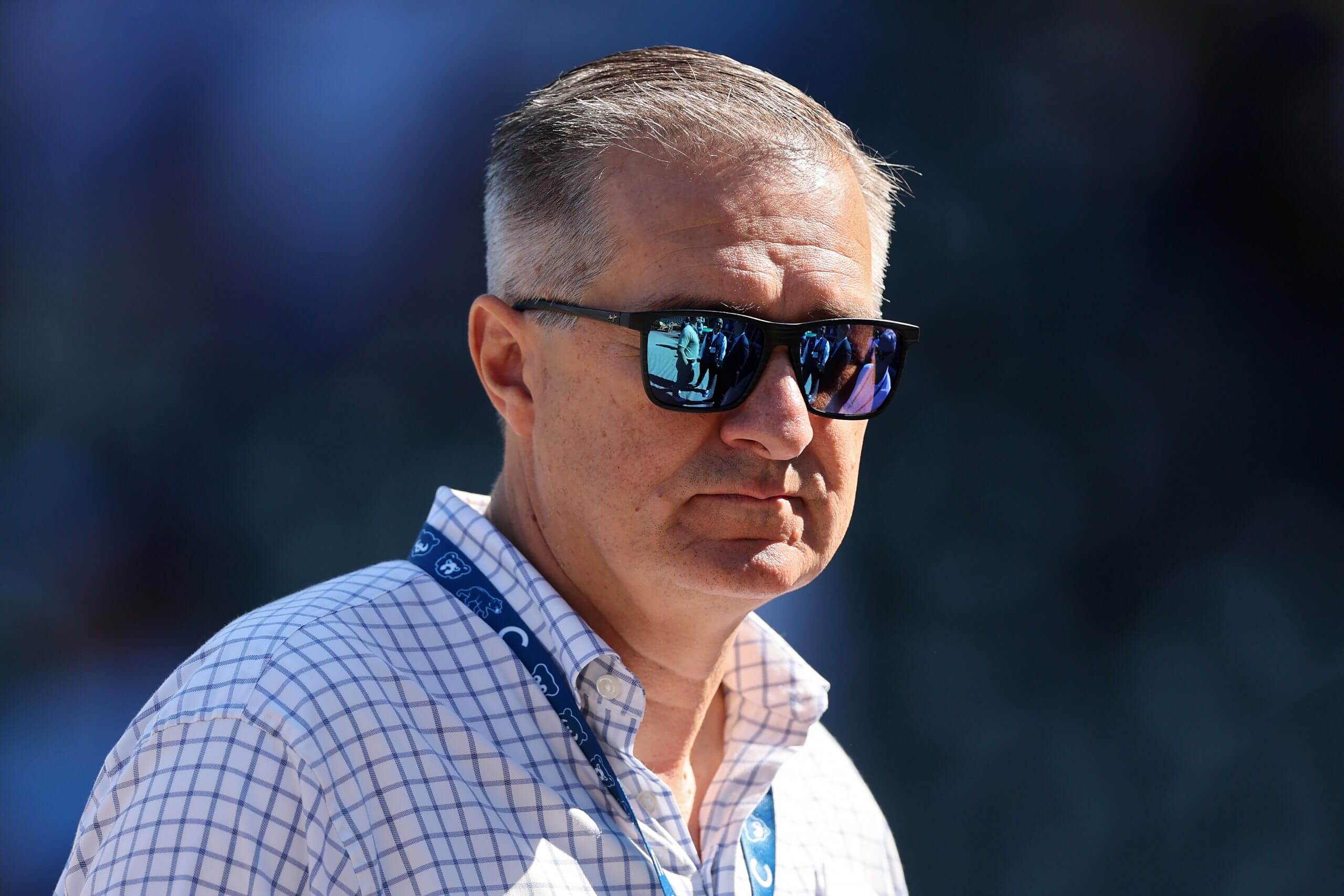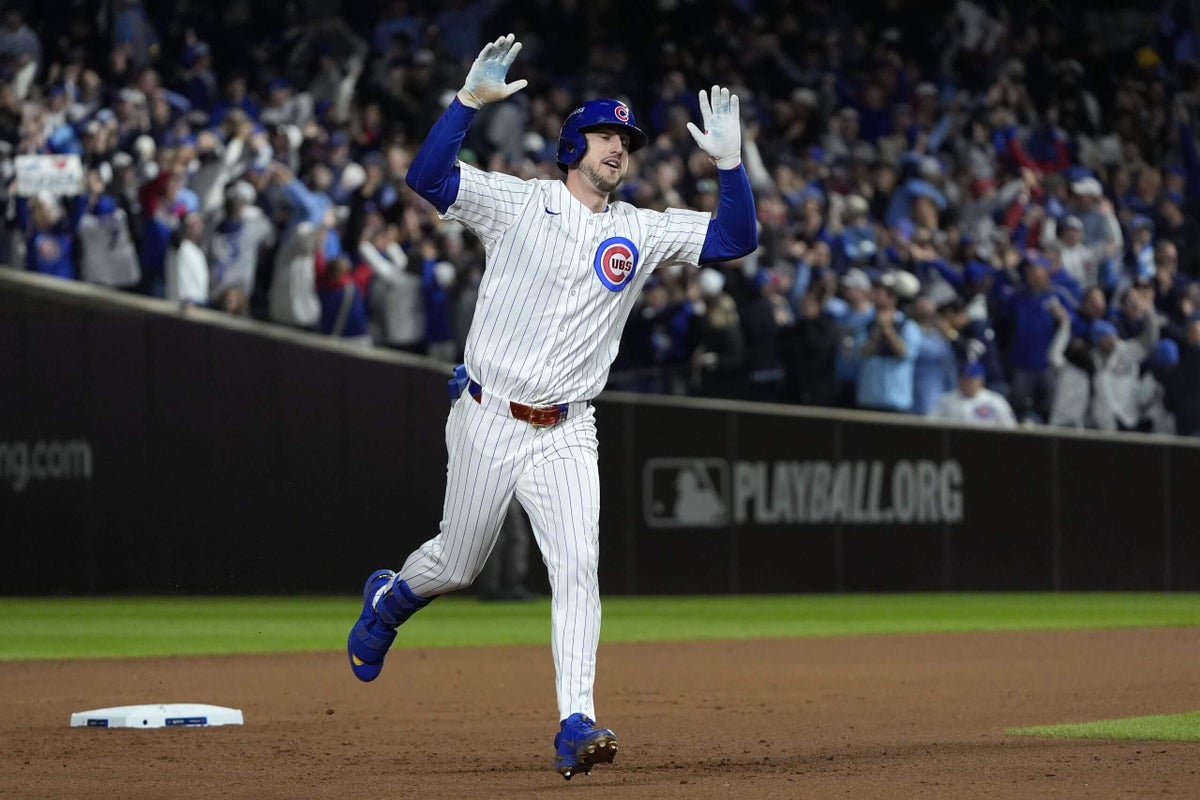MILWAUKEE — Kyle Tucker isn’t the type to emote for the TV cameras or wax poetic about the romanticism of Chicago Cubs baseball. That consistent personality and sense of detachment helped him develop into one of the sport’s best hitters. About 45 minutes after a brutal season-ending loss also isn’t the ideal time to assess your options as a free agent.
Still, the questions had to be asked. One way or another, the answers would be revealing.
Inside American Family Field’s quiet visiting clubhouse late Saturday night, the celebration out on the field could be heard. The Milwaukee Brewers advanced to the National League Championship Series and trolled the Cubs in their team picture, posing with an “L” flag.
In Tucker’s potentially one-and-done season on the North Side, the Cubs honored that postgame Wrigley Field tradition, more often flying the “W” flag atop the iconic center-field scoreboard to signify a win.
Jed Hoyer’s front office acquired the All-Star outfielder in a blockbuster deal with the Houston Astros for this very purpose: Tucker did his part in helping the Cubs earn their first playoff appearance in five years and win their first postseason round since 2017.
Tucker’s prolonged second-half slump and combination of injuries also created an opening for the Brewers to run away in the NL Central race, giving them the division title, a first-round bye and home-field advantage for the decisive Game 5 of the Division Series.
After that 3-1 defeat, Tucker stood at his locker for a media scrum that lasted five-plus minutes. He shrugged his shoulders.
“We’ll see what happens,” Tucker said. “I don’t know what the future’s going to hold. But if not, it was an honor playing with all these guys. And I wish everyone the best of luck, whether it’s playing (together) next year or not. It’s a really fun group to be a part of.”
Tucker’s body language and low-key answers don’t need to be interpreted as much as we look at his season as a whole and state the obvious.
In the first half, Tucker performed at an MVP level that would command an astronomical sum on the open market, the kind of megadeal the Cubs have consistently avoided in terms of extended years and maximum dollars.
In the second half, Tucker underperformed to the point where he resembled one of those discount free agents the Cubs like to target for bounce-back years on short-term contracts.
The biggest deals for free agents are often driven at the ownership level, and Cubs chairman Tom Ricketts gives Hoyer, the team president, and general manager Carter Hawkins wide latitude to make baseball decisions.

Will Cubs owner Tom Ricketts approve a megadeal for Kyle Tucker? (Michael Reaves / Getty Images)
Those Cubs executives never planned to overpay Tucker to justify the high price they paid to acquire him from the Astros — potentially 14 years of club control over outfielder Cam Smith, infielder Isaac Paredes and pitcher Hayden Wesneski. Tucker’s free agency would represent a separate negotiation.
At this stage, the pressure and momentum to get a deal done don’t seem to be there. The Tampa Bay Rays have already been identified as a possible fit, given the new ownership group in Tucker’s hometown. It’s also not a total coincidence the Cubs have minimal financial commitments to players after the 2026 season, when the baseball industry’s collective bargaining agreement is set to expire.
“I don’t really know right now,” Tucker said. “I was more so worried about the game.”
In Chicago’s first three victories in elimination games this October, Tucker collected six hits and three walks and scored four runs, showing the dramatic difference he can make for this offense.
Striking out in a clutch situation in Saturday’s Game 5 also underlined Tucker’s recent struggles.
His .882 first-half OPS dropped 144 points after the All-Star break. He kept playing through a sprained right ring finger that was subsequently revealed to be a hairline fracture in his right hand. Manager Craig Counsell briefly benched him for a “mental reset” in August. He missed almost all of September with a strained left calf.
“We had some ups and downs throughout the year, but we stuck together,” Tucker said. “It’s a really great group of people.”
With Tucker in a more limited role, Seiya Suzuki again demonstrated he’s a capable defender in right field. Moisés Ballesteros and Owen Caissie — two well-regarded prospects the Cubs did not trade for pitching help at the July 31 deadline — gained more major-league experience.
The Cubs could already have a floor in terms of a right fielder and left-handed designated hitters, which would allow them to spend more money on a pitching staff that was worn out by the middle of October.
Moving on from Tucker, however, would not be without risk. Replacing the overall contributions from a well-rounded player might not be that simple. In an uneven year, his production was still worth more than $36 million, according to FanGraphs’ dollars metric, and Baseball Reference rated him at 4.5 WAR.
Tucker will be only 29 next year, still in the prime of his career. The Cubs also made him their nominee this year for the Roberto Clemente Award, which recognizes character, community involvement, and impact on and off the field.
Tucker said he enjoyed his experience in Chicago and appreciated the positive atmosphere at Wrigley Field and inside the organization.
“It’s kind of one big family,” Tucker said. “Everyone’s here to support each other, whether it’s getting better on the field or off the field. Everyone was hanging out. We’re not just here to show up and work. We’re hanging out, outside the field, and becoming close. I don’t know if there’s many teams that are like that or not. But this team definitely built a lot of relationships.”
As the Cubs packed their bags and exchanged end-of-season hugs, no one could know where Tucker would be going as a free agent, or whether this relationship would continue. Both sides have unfinished business.

